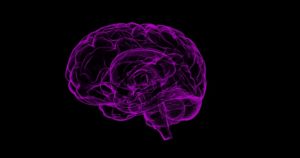New research suggests a bacteria may be behind Alzheimer’s disease
Recent research has challenged the leading theory that the amyloid protein, among other proteins such as tau, is behind Alzheimer’s disease. There is mounting evidence that a bacterium involved in gingivitis may in fact be the cause of Alzheimer’s – a potential game-changer for the prevention and treatment of the disease
Alzheimer’s is the most common form of dementia – a group of cognitive, life-limiting symptoms affecting more than 400,000Australians – and accounts for up to 70 per centof cases. It is a neurodegenerative disease that results in progressive loss of cognitive function, memory, ability to perform everyday tasks and personality change.
For decades, it has been thought the disease is caused by defective control of the amyloid and tau proteins, which results in an accumulation of sticky plaques and tangles in the brain that destroys brain tissue.
The amyloid hypothesis has been the focus of Alzheimer’s research since the mid-1980’s, however the estimated failure rate of drug development for the disease to date may be as high as 99 per cent. This high failure rate, and the fact that many healthy people can have brain plaques and tangles without having dementia, has brought the amyloid theory, as it stands, into question.
Following the identification of a particular bacteria in the brains of those with Alzheimer’s, it was hypothesised that the build-up of amyloid protein may be acting as an anti-microbial defence against the bacteria. The bacteria, Porphyromonas gingivalis, is a known cause of gum disease, which is also found to be strongly associated with Alzheimer’s.
Though there was initial uncertainty as to whether the bacteria or the amyloid plaques cause the brain damage associated with Alzheimer’s, two toxic enzymes used by P. gingivalisto break down human tissue were recently identifiedin the brains of people who had the disease. This suggests it may be the bacteria that is behind the breakdown of brain tissue and resulting cognitive decline.
The P. ginigivalistheory is still in its infancy, with questions still to be answered such as how the bacteria arrives in the brain and how the theory accommodates for the strong genetic factors known to be associated with the disease. However, with the number of people living with dementia expected to rise to over half a million by 2028 in the absence of a medical breakthrough, it is a welcomed step forward that offers new hope of treatment
, and potentially even preventative measures, such as a vaccine.
Having partnered with Alzheimer’s Queensland for many years, the VIVA! team are excited to see where these developments lead.
